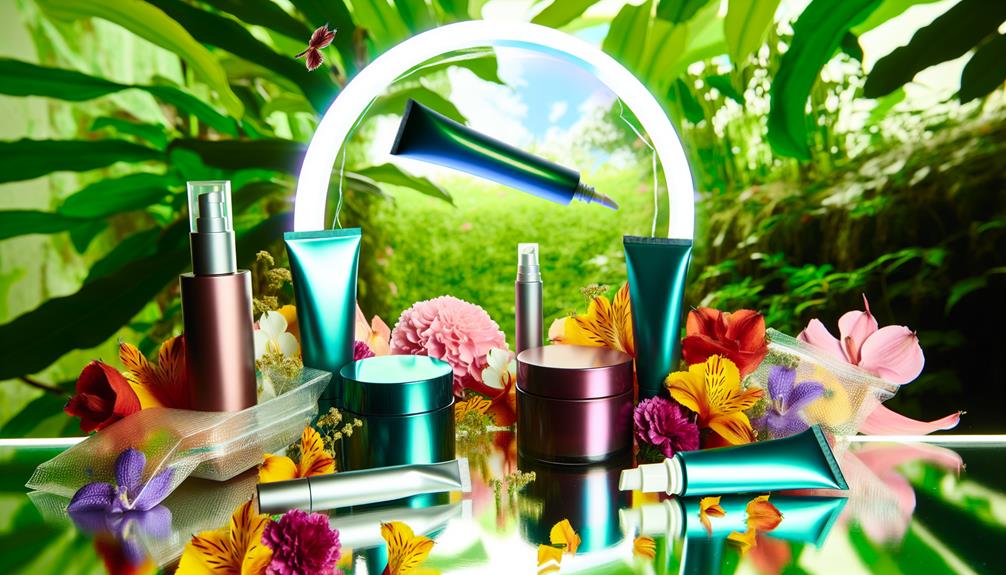
You'll find that recyclable cosmetic packaging trends center on sustainability and innovation. Brands are moving towards biodegradable materials and refillable packaging solutions, cutting down on waste. Innovative combinations of recycled and biodegradable materials also enhance durability while being eco-friendly. Minimalist designs with simple aesthetics are gaining popularity, focusing on functionality and clarity. Consumer education is rising, with brands emphasizing transparency about sourcing and materials. Partnerships with recycling programs are becoming commonplace, encouraging responsible disposal. These shifts not only meet consumer demand but also redefine the beauty industry's environmental impact—stick around to explore more insights into these exciting trends.
Main Points
- The cosmetic packaging industry is increasingly using biodegradable materials to minimize waste and pollution while meeting consumer demand for sustainability.
- Refillable packaging solutions are gaining popularity, promoting sustainable habits and reducing waste with user-friendly designs for product replenishment.
- Brands are adopting minimalist design trends, focusing on clean aesthetics and functionality to reduce material use and appeal to eco-conscious consumers.
- Consumer education initiatives are enhancing awareness of sustainable practices, empowering shoppers to make informed choices about eco-friendly packaging.
- Partnerships with recycling programs and evolving legislation are driving brands to adopt innovative, recyclable packaging options to align with consumer expectations for sustainability.
Rise of Biodegradable Materials
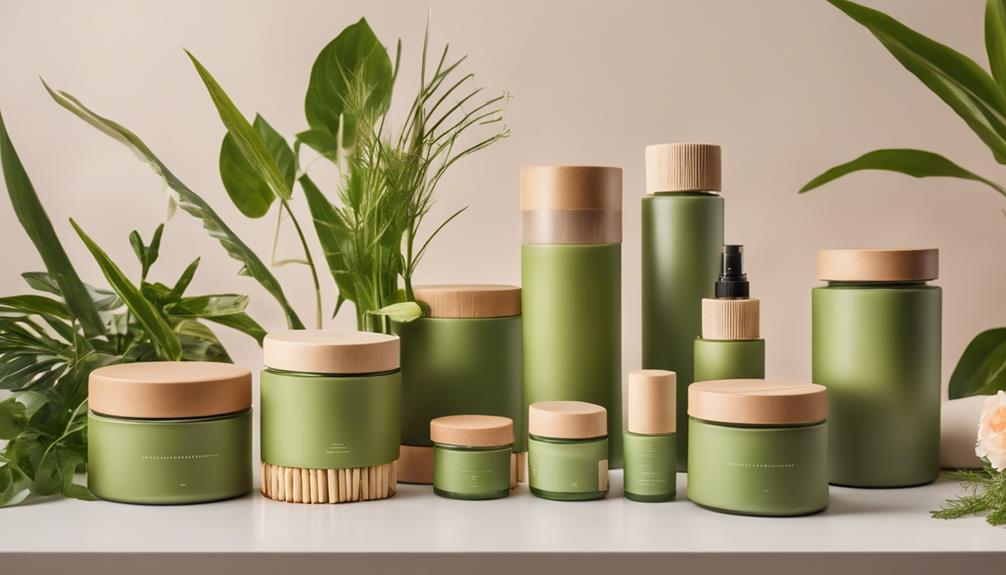
In recent years, there's been a noticeable shift towards biodegradable materials in the cosmetic packaging industry. You might've noticed brands embracing biodegradable innovations, such as custom organic hemp soap boxes, aiming to reduce their environmental footprint.
These materials break down naturally, minimizing waste and pollution. Companies are increasingly focusing on sustainable sourcing, ensuring that the raw materials used in packaging are responsibly harvested.
By choosing biodegradable options, you not only support eco-friendly practices but also encourage brands to innovate further. This change reflects a growing consumer demand for sustainability, pushing the industry to rethink traditional packaging methods.
As you explore cosmetic products, look for those that prioritize biodegradable materials—you'll be making a positive impact on the planet while enjoying your favorite beauty items.
Refillable Packaging Solutions
Refillable packaging solutions are transforming the cosmetic industry by offering a sustainable alternative to single-use containers.
These innovative options not only reduce waste but also enhance consumer convenience.
When choosing refillable packaging, consider these key aspects:
- Sustainable Sourcing: Look for brands that prioritize materials sourced responsibly, ensuring a reduced environmental impact.
- Ease of Use: Refillable systems should be user-friendly, allowing you to easily replenish your favorite products without hassle.
- Brand Engagement: Many companies offer incentives for refills, fostering loyalty and encouraging sustainable purchasing habits.
Innovative Material Combinations
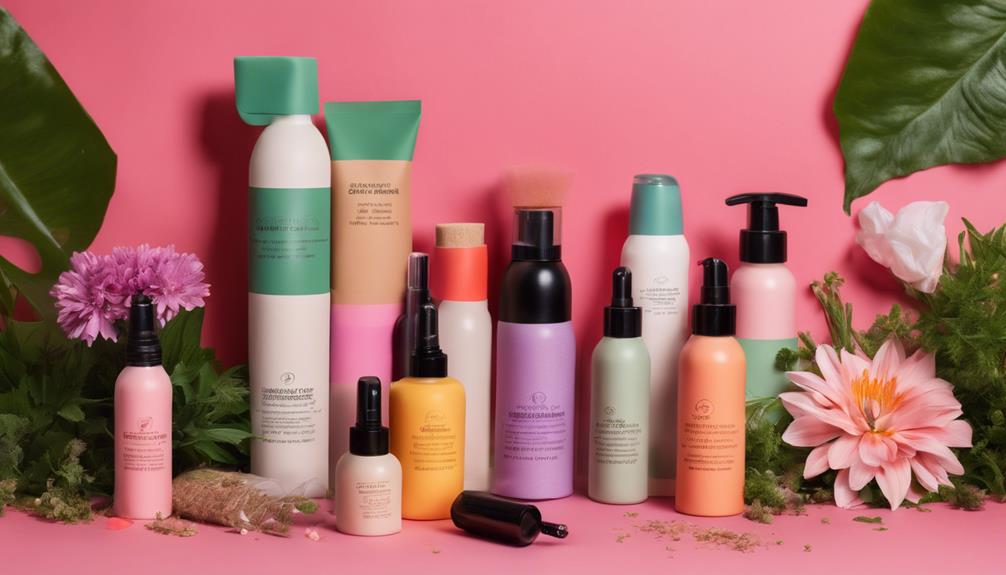
As the cosmetic industry embraces refillable packaging solutions, the focus is shifting toward innovative material combinations that enhance sustainability and performance.
Brands are increasingly turning to eco-friendly options like Custom Kraft Pillow Soap Boxes, which not only support sustainable practices but also offer a lightweight yet sturdy construction for effective product protection.
You're likely to see brands experimenting with blends of biodegradable plastics and recycled materials, striking a balance between material durability and eco-friendliness.
These combinations not only boost the lifespan of packaging but also reduce the overall environmental impact.
By prioritizing sustainable sourcing, brands are ensuring their materials are responsibly harvested and processed, aligning with consumer demand for greener options.
This approach not only meets regulatory standards but also resonates with eco-conscious consumers.
In the end, innovative material combinations are paving the way for a more sustainable future in cosmetic packaging, proving that beauty can indeed go hand in hand with environmental responsibility.
Minimalist Design Trends
Many consumers are drawn to minimalist design trends in cosmetic packaging, appreciating the clean aesthetics and functionality they offer.
This trend isn't only visually appealing but also aligns with the growing demand for eco-conscious packaging, which emphasizes sustainable materials and practices.
As you explore this trend, you'll notice how it aligns with sustainable aesthetics and eco-conscious branding.
Here are three key elements to reflect upon:
- Simple Shapes: Straightforward, geometric designs cut down on material use while creating a modern look.
- Neutral Colors: Earthy and muted tones emphasize natural ingredients and sustainability, appealing to eco-conscious shoppers.
- Limited Text: Minimalist packaging often features concise labeling, making the product's purpose clear while maintaining a sleek appearance.
Consumer Education Initiatives
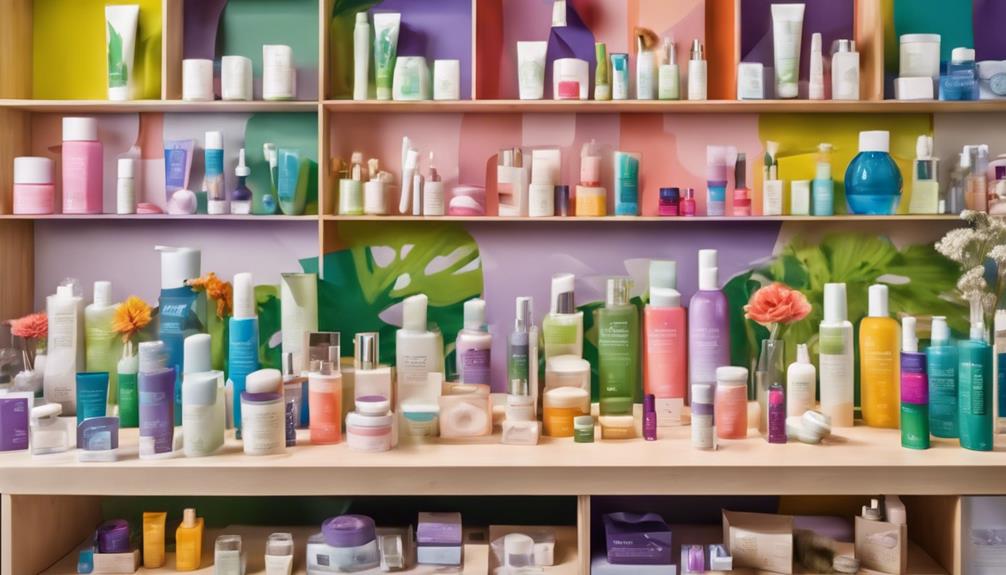
Understanding the importance of sustainable practices in cosmetic packaging is essential for today's environmentally conscious consumers. Brands are increasingly focusing on consumer education initiatives to raise awareness about sustainable sourcing and recycling options.
For instance, many companies are now utilizing eco-friendly packaging solutions that highlight their commitment to the environment. By providing clear information on packaging materials, companies help you make informed choices that align with your values. For instance, labels might indicate if a product is made from recyclable materials or how to properly dispose of it.
Workshops, social media campaigns, and informative websites are also effective tools for boosting consumer awareness. As you engage with these initiatives, you'll not only feel empowered but also contribute to a more sustainable future.
Make sure to seek out brands that prioritize education and transparency in their packaging practices.
Plant-Based Inks and Adhesives
Consumer education initiatives are paving the way for innovative solutions in cosmetic packaging, including the use of plant-based inks and adhesives.
These eco-friendly options not only promote sustainable sourcing but also leverage advanced printing technology, such as high-quality printing that showcases vibrant colors and stunning artwork.
Here's why you should consider them:
- Reduced Environmental Impact: Plant-based inks and adhesives are derived from renewable resources, minimizing reliance on petrochemicals.
- Improved Packaging Quality: Modern printing technology enhances the vibrancy and durability of these inks, ensuring your products stand out.
- Consumer Appeal: More customers are prioritizing sustainability in their purchasing decisions, making plant-based options attractive for brands aiming to boost their eco-credentials.
Partnerships With Recycling Programs

Building partnerships with recycling programs is a crucial step for cosmetic brands aiming to enhance their sustainability efforts. By engaging in collaborative initiatives, you can create a robust recycling network that benefits both your brand and the environment.
These partnerships not only streamline recycling processes but also promote community engagement, encouraging consumers to participate actively in sustainability efforts. When you collaborate with local recycling programs, you can educate your customers about proper disposal methods and the importance of recycling cosmetic packaging.
This shared responsibility fosters a sense of community, making sustainability a collective goal. In the end, these partnerships can elevate your brand's reputation, showing that you're committed to reducing waste and promoting a greener future for all.
Impact of Legislation on Packaging
In light of increasing environmental awareness, legislation surrounding packaging is rapidly evolving, pushing cosmetic brands to rethink their materials and practices.
Government regulations are setting new packaging standards that prioritize sustainability goals, while also enhancing consumer rights by promoting transparency. As a result, brands face compliance challenges but can find solutions through industry collaboration.
Here are key impacts of this legislative shift:
- Stricter eco labeling practices guarantee consumers make informed choices.
- Increased focus on reducing the environmental impact of packaging materials.
- Demand for innovative, recyclable options drives creative design solutions.
Adapting to these changes helps brands align with consumer expectations and fosters a more sustainable future in the cosmetics industry.
Customizable Eco-Friendly Options
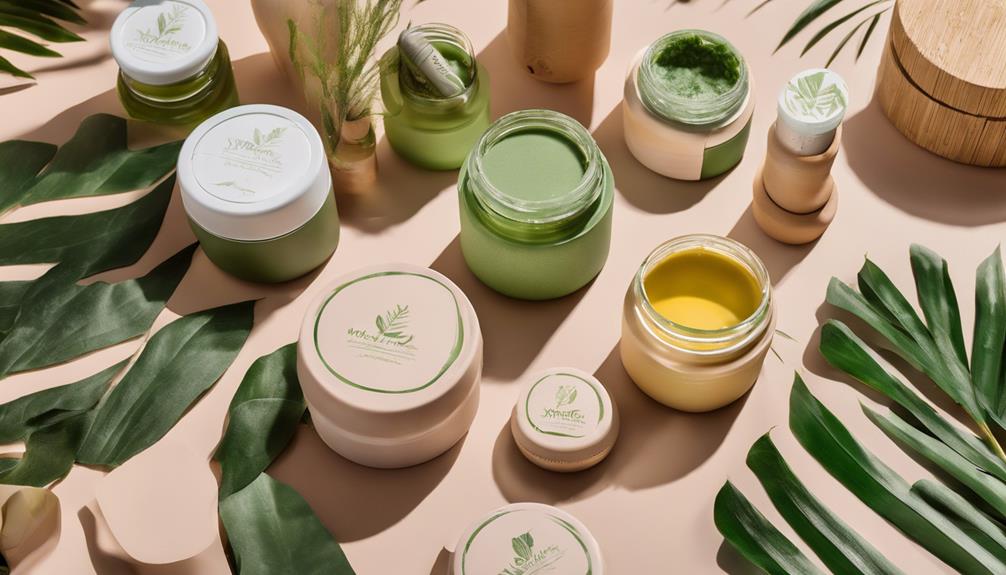
Amid the growing demand for sustainability, brands are exploring customizable eco-friendly options that resonate with conscious consumers.
You'll find that many companies now offer custom designs for packaging, allowing you to choose materials that reflect your values.
Whether it's biodegradable containers or recyclable components, these choices enhance sustainable branding while making your products stand out.
Imagine selecting unique designs that not only appeal to your aesthetic but also demonstrate your commitment to the environment.
By opting for customizable solutions, you can create a powerful connection with your audience.
As you navigate these options, remember that sustainable packaging isn't just a trend—it's a crucial part of building a responsible brand that resonates with eco-conscious shoppers.
Brand Transparency and Sustainability
While many consumers seek eco-friendly products, they also demand transparency from brands about their sustainability practices. You want to know what goes into your cosmetics, and brands need to step up.
Here are three key aspects to examine:
- Supply Chain Transparency: You expect brands to disclose where their ingredients come from and how they're produced.
- Ethical Sourcing: It's important that brands prioritize sourcing materials responsibly, ensuring workers are treated fairly and the environment is protected.
- Clear Labeling: You appreciate straightforward product labels that highlight recyclable components and sustainable practices.

